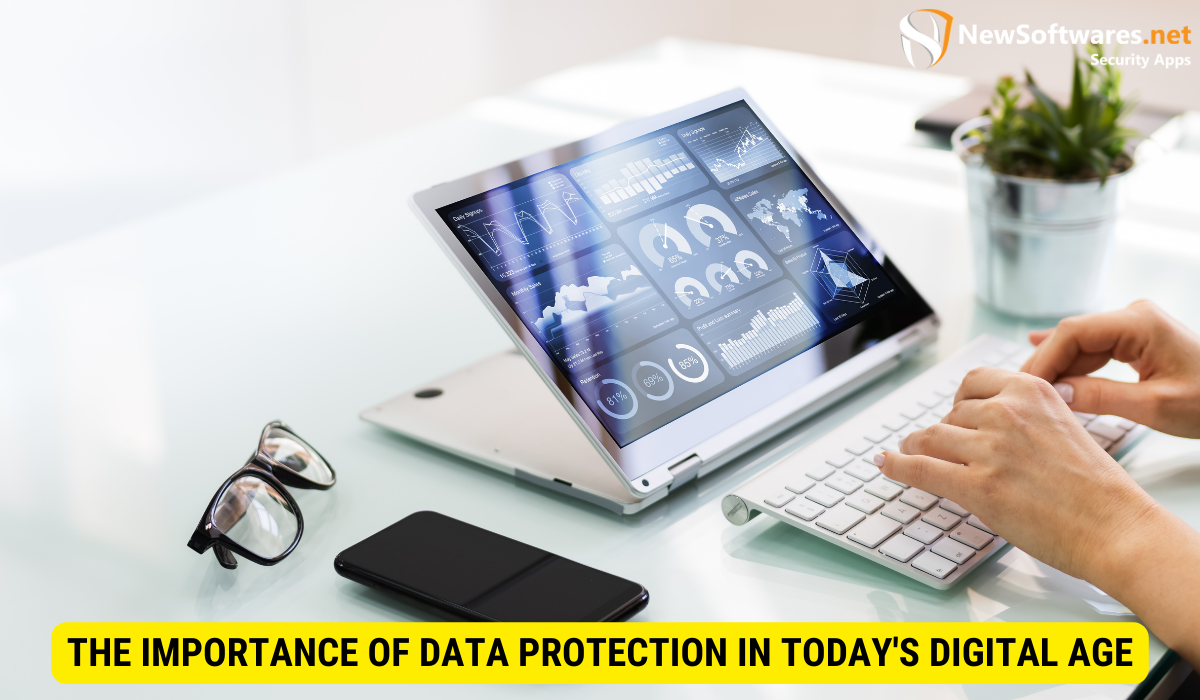AEP’s data protection strategies prioritize proactive risk management, continuous monitoring, and adaptation to evolving cyber threats. Key components include encryption, stringent access controls, employee training, and well-defined incident response plans. These measures safeguard against cyber threats and uphold data privacy and compliance, demonstrating AEP’s commitment to securing sensitive information in the digital landscape.
In today’s digital age, data protection has become a crucial aspect of business operations. Companies like AEP understand the significance of safeguarding sensitive information from cyber threats and breaches. Together, we will delve into AEP’s data protection strategies, exploring their importance, impact, and future vision. By comprehending these strategies, organizations can gain insights into how they can ensure the security and privacy of their own data.
The Importance of Data Protection in Today’s Digital Age

Data protection plays a pivotal role in today’s interconnected world. With the exponential growth of digital data, administrations must actively safeguard their valuable information. A breach can have far-reaching penalties, including financial losses, reputational damage, and legal implications. AEP recognizes these risks and has employed robust data protection measures to mitigate them.
In today’s digital age, where technology has become an crucial part of our lives, the importance of data protection cannot be overstated. From personal information to sensitive business data, the digital landscape is filled with valuable assets that need to be safeguarded. Organizations, both big and small, are constantly under threat from cybercriminals who seek to adventure vulnerabilities and gain unauthorized access to confidential information.
AEP, a leading organization in the field, understands the gravity of these risks and has taken proactive steps to make certain the protection of their data. They have implemented state-of-the-art encryption techniques, multi-factor authentication, and consistent security audits to identify and address any potential vulnerabilities. By investing in cutting-edge technology and staying conversant with the latest security practices, AEP sets an example for other organizations to follow.
The Role of Data Protection in Business
Data protection is not solely a matter of complying with regulations; it is an essential component of business continuity and trust. By safeguarding customer data, organizations can build strong relationships with their clients, enhance customer loyalty, and protect their brand reputation. AEP’s data protection strategies are designed to not only meet regulatory necessities but also build trust and confidence among its customers.
When customers entrust their private information to a company, they expect it to be handled with care and kept secure. A breach of this trust can have severe consequences, leading to a loss of customers, damage to the company’s reputation, and even legal effects. Therefore, organizations must prioritize data protection as a fundamental aspect of their business operations.
AEP understands the importance of maintaining customer trust and has implemented stringent data protection measures to make sure the security and confidentiality of their clients’ information. By doing so, they not only comply with industry regulations but also demonstrate their commitment to safeguarding customer data.
The Impact of Data Breaches on Companies and Individuals
Data breaches can have severe repercussions for both companies and individuals. From financial fraud and identity theft to the compromise of confidential business information, the consequences can be devastating. Organizations must invest in robust data protection strategies to prevent breaches and safeguard the privacy and security of their stakeholders.
For companies, the aftermath of a data breach can be financially crippling. The costs associated with examining the breach, notifying affected individuals, and implementing remedial measures can quickly add up. Additionally, the loss of customer trust and the damage to the company’s reputation can have long-lasting effects on its bottom line.
Individuals, on the other hand, can suffer significant personal and financial harm as a result of a data breach. Identity theft, where personal information is used to commit fraudulent activities, can lead to financial ruin and emotional distress. Moreover, the exposure of sensitive personal information can have long-term consequences, affecting an individual’s creditworthiness and overall well-being.
Recognizing the potential impact of data breaches, AEP has made data protection a top priority. They have implemented vigorous security measures, such as firewalls, intrusion detection systems, and employee training programs, to prevent unauthorized access to their systems. By taking proactive steps to protect their data, AEP ensures the safety and privacy of their stakeholders.
An Overview of AEP’s Data Protection Strategies
AEP, a leading organization in the energy sector, understands the vital importance of safeguarding sensitive data in today’s digital landscape. With the increasing prevalence of cyber threats, AEP has developed a comprehensive data protection approach that encompasses a set of core principles and key components.
The Core Principles of AEP’s Data Protection Approach
AEP’s data protection approach is guided by a set of core principles that serve as the foundation for its robust cybersecurity measures. These principles include:
- Proactive Risk Management: AEP takes a proactive approach to identify and assess potential risks to its data. By staying ahead of emerging threats, AEP can implement preventive measures and mitigate vulnerabilities before they are exploited.
- Continuous Monitoring and Evaluation: AEP recognizes that cybersecurity is an ongoing process. Therefore, it maintains a vigilant stance by continuously monitoring and evaluating its data protection strategies. This allows for appropriate detection of any anomalies or breaches, enabling swift remediation actions.
- Commitment to Keeping Pace with Evolving Threats: AEP acknowledges the ever-evolving nature of cyber threats and the need to adapt accordingly. It invests in research and development to stay up-to-date with the latest technologies and methodologies in data protection. This commitment ensures that AEP’s defenses remain resilient against emerging threats.
The Key Components of AEP’s Data Protection Framework
AEP’s data protection framework comprises various interconnected components, each playing a vital role in fortifying the organization’s defenses and preserving the confidentiality, integrity, and availability of data. These components include:
- Encryption: AEP employs industry-standard encryption algorithms to protect data both at rest and in transit. This ensures that even if illegal individuals gain entree to the data, it remains unintelligible and unusable.
- Access Controls: AEP implements stringent access controls to restrict data access to authorized personnel only. By employing multi-factor authentication, role-based access controls, and regular access reviews, AEP minimizes the risk of unauthorized data exposure.
- Employee Training: AEP recognizes that employees are a crucial line of defense against cyber threats. It conducts regular training sessions to educate employees about best practices in data protection, raising awareness about potential risks and equipping them with the knowledge to identify and report suspicious activities.
- Incident Response Plans: AEP has well-defined incident response plans in place to safeguard a swift and synchronized response in the event of a data breach or cyber incident. These plans framework the steps to be taken, the roles and tasks of key personnel, and the communication protocols to minimize the impact and facilitate a speedy recovery.
- Regular Data Backups: AEP understands the importance of data backups as a means of data retrieval in case of system failures or ransomware attacks. It maintains regular backups of critical data, stored in secure off-site locations, to confirm business continuity and minimize the risk of data loss.
By integrating these key components into its data protection framework, AEP establishes a multi-layered defense strategy that addresses various aspects of data security. This comprehensive approach enables AEP to maintain the trust of its customers and stakeholders while safeguarding sensitive information from potential threats.
Ensuring Security with AEP’s Data Protection Strategies
The Role of Encryption in AEP’s Data Protection
Encryption is a fundamental aspect of AEP’s data protection strategies. By encrypting complex data at rest and in transit, AEP ensures that even if unauthorized access occurs, the information remains unreadable and unusable. Encryption serves as a powerful deterrent and provides an additional layer of shield against potential threats.
How AEP’s Strategies Protect Against Cyber Threats
AEP’s data protection strategies go beyond encryption. The organization employs comprehensive cybersecurity measures, including robust firewalls, intrusion detection systems, and regular vulnerability assessments. By staying vigilant against emerging threats and promptly addressing vulnerabilities, AEP reduces the risk of successful cyber-attacks.
Maintaining Privacy with AEP’s Data Protection Strategies
AEP’s Approach to Data Privacy and Compliance
Privacy and compliance are at the forefront of AEP’s data protection strategies. The organization strictly adheres to applicable data protection regulations and industry best practices. AEP maintains clear policies and procedures, ensures transparency in data handling, and empowers individuals to exercise control over their personal information.
How AEP’s Strategies Safeguard Personal Information
AEP recognizes the value of personal information and the need to protect it from unauthorized access. Through stringent access controls, regular data audits, and privacy impact assessments, AEP ensures that personal information is secured throughout its lifecycle. By embedding privacy into its data protection strategies, AEP prioritizes the rights and expectations of individuals.
The Future of Data Protection at AEP

Innovations and Improvements in AEP’s Data Protection Strategies
AEP is committed to continuous innovation and improvement in its data protection strategies. The organization actively explores emerging technologies and industry trends to enhance its defenses and stay ahead of evolving threats. By embracing cutting-edge solutions, AEP remains at the forefront of data protection and sets new standards in the industry.
The Long-Term Vision for Data Protection at AEP
AEP’s long-term vision for data protection revolves around adaptability and resilience. As technology and risk landscapes continue to evolve, AEP aims to develop agile data protection strategies that can effectively address emerging challenges. By fostering a culture of data security and privacy, AEP strives to instill confidence in its stakeholders and donate to a safer digital ecosystem.
Key Takeaways
- Data protection is vital in today’s digital age to safeguard sensitive information and maintain trust.
- AEP’s data protection strategies prioritize proactive risk management, continuous evaluation, and adaptation to evolving threats.
- Encryption, access controls, employee training, and incident response plans are key components of AEP’s data protection framework.
- AEP’s strategies protect against cyber threats by employing robust cybersecurity measures and regular vulnerability assessments.
- AEP’s data protection strategies uphold privacy rights and comply with applicable regulations, ensuring the security of personal information.
FAQs
-
How does data protection benefit businesses?
Data protection benefits businesses by safeguarding valuable information, maintaining customer trust, and protecting brand reputation. It also helps organizations comply with data protection regulations and avoid financial losses due to breaches.
-
What role does encryption play in data protection?
Encryption plays a vigorous role in data protection by converting sensitive information into unreadable formats. Even if unauthorized access occurs, encrypted data remains secure and unusable, providing an additional layer of protection.
-
How does AEP protect against cyber threats?
AEP protects against cyber threats through a combination of robust cybersecurity measures, including firewalls, intrusion detection systems, and vulnerability assessments. These measures help detect and prevent unauthorized access and mitigate potential risks.
-
How does AEP prioritize data privacy and compliance?
AEP places a high priority on data privacy and obedience by adhering to relevant regulations and industry best practices. The organization maintains clear policies, conducts regular data audits, and empowers individuals to control their personal information.
-
What is AEP’s long-term vision for data protection?
AEP’s long-term vision for data protection involves continuous innovation, adaptability, and resilience. The organization aims to develop agile strategies that can effectively address emerging challenges and contribute to a safer and more secure digital ecosystem.
Conclusion
Data protection is paramount in today’s digital landscape, and AEP understands the significance of ensuring the security and privacy of sensitive information. With robust strategies focused on proactive risk management, encryption, and comprehensive cybersecurity measures, AEP sets a strong example for organizations seeking to enhance their data protection practices. By prioritizing data privacy, compliance, and continuous improvement, AEP aims to build trust among its stakeholders and safeguard the future of data protection in the evolving digital age.
